If you are a water sports enthusiast: kayaking, fishing, boating, hiking, and beyond, water shoes are critical for comfort, safety, and performance.
The days of water shoes being clunky, hideous messes are long behind us. These days, more fashionable and functional water shoes are the standard.
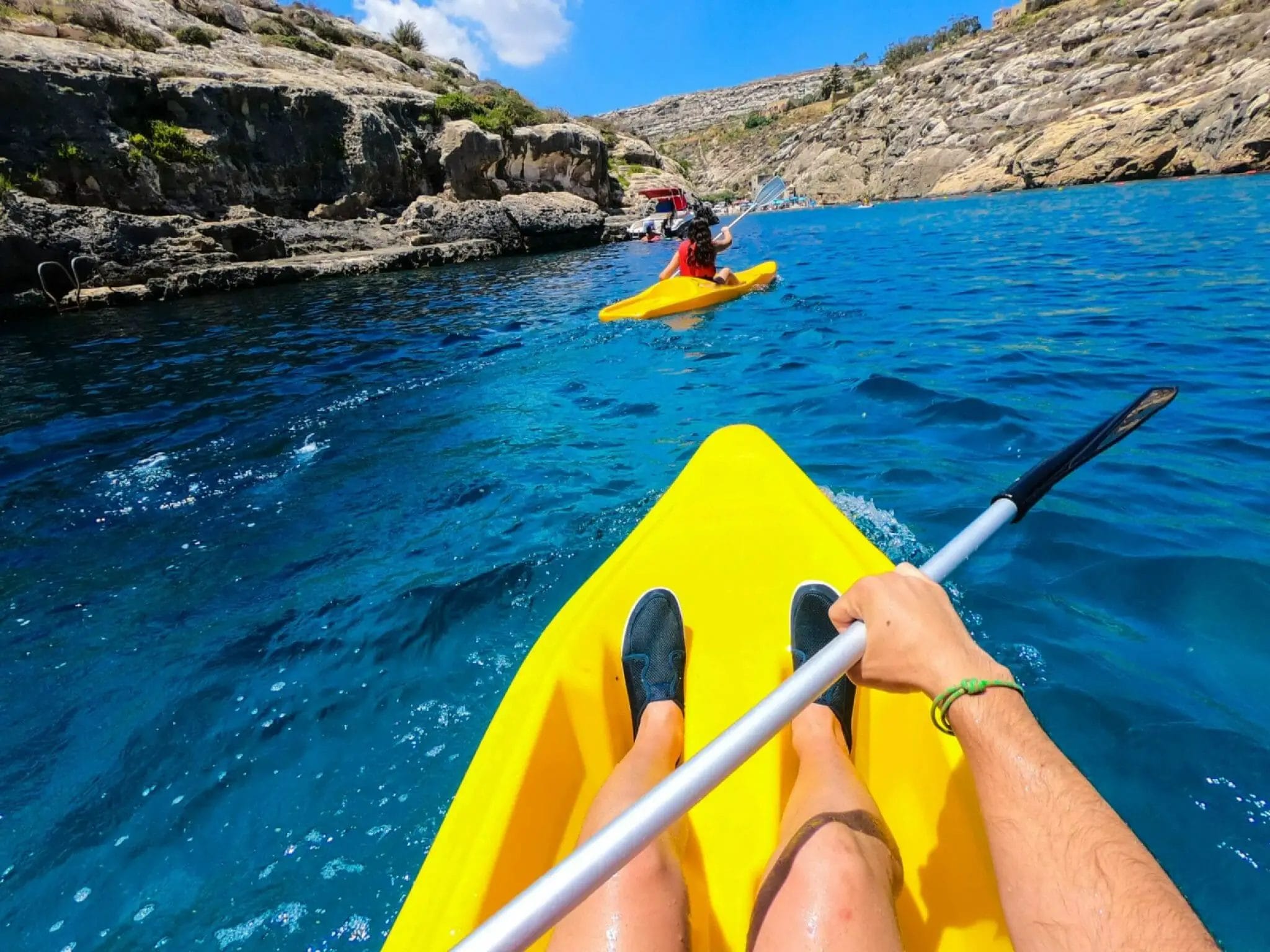
Modern water shoes come with a wide array of features. From underfoot traction to water venting, to advanced cushioning and thermal protection, and even proper arch support and fit, they are full-fledged shoe offerings these days.
However, the rise in quality has come with an onslaught of options. This begs the question: what is the best water shoe for my needs? The answer may surprise you!
Selecting the Best Water Shoes
Finding the best water shoes for your needs depends on your planned uses. There are plenty of functional options out there, but for some tasks there are specific options that outperform others. One choice might have great traction for hiking through streams, but fall flat when it comes to draining water quickly. Another option might drain great, but lack traction on slippery surfaces. It’s important to take this into account when making a decision.
All in all, it comes down to narrowing the selections and performing plenty of testing. But who has the time and funds to grab a ton of water shoes and test them out on a variety of terrains to see which ones perform well, which live up to the reviews, and which ones fall flat?
We do. And we have. Here’s a summary table of our choices for the best water shoes available right now. After that, you can find reviews and more about what to look for when buying.
Here are the best water shoes you can buy:
- Best All-Around: KEEN Newport H2 – Men’s | Women’s | Kids
- Runner Up (Best Water Shoe for the Beach): Speedo Surf Knit Pro – Men’s | Women’s | Kids
- Best for Hiking: Merrell Choprock Sieve – Men’s | Women’s
- Best Nike Water Shoe: Nike Water Sandals – Canyon (Men’s) | Owaysis (Women’s)
- Running Shoe for Water: Salomon Crossamphibian Swift 2 – Men’s | Women’s
- Best for Swimming: L-Run Water Shoes (Unisex)
- Best Open Sandal: Crocs Swiftwater Expedition – Men’s | Women’s
- Vibram FiveFingers Lovers: Vibram V-Aqua – Men’s | Women’s
- Best for Boating & Fishing: Under Armour Kilchis – Men’s | Women’s
- Best for Kayaking & Watersports: Body Glove Sidewinder – Men’s | Women’s
- Best on a Budget: ALEADER Quick Drying – Men’s | Women’s
How We Tested the Shoes
We bought an obscene numbers of these in all shapes, sizes, designs, styles, and functions. From this pile, we took all of them through a few different trials and tribulations, eventually narrowing the lot down to our top choices. But what were our tests? Glad you asked.
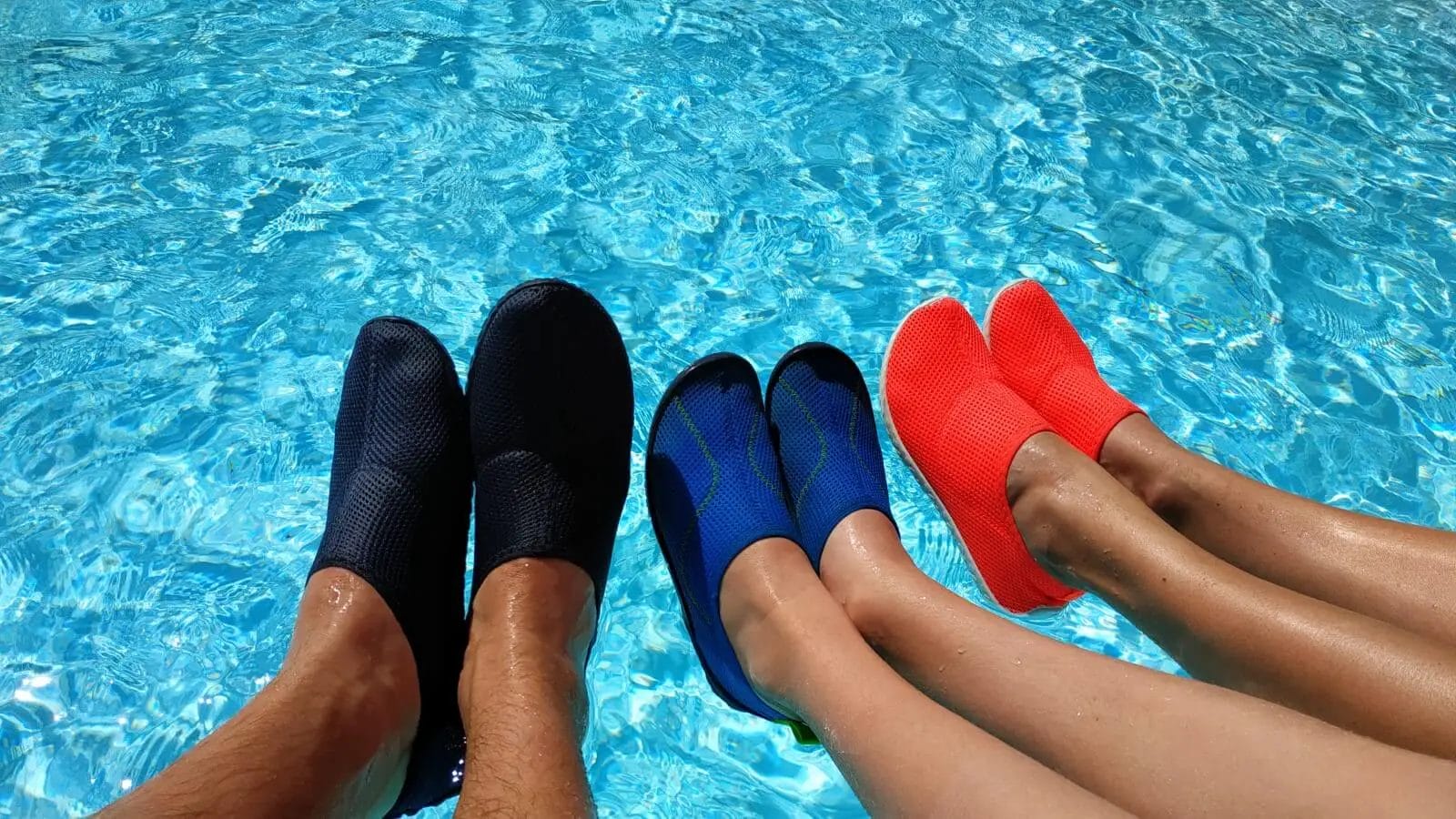
The Ocean Test
One of our favorite places to enjoy the wonders of the Atlantic Ocean is Little Talbot Island State Park. This was a three-part process, similar to the testing for the KEEN Newport in our guide on shoes for plantar fasciitis.
First, we walked a half mile in deep sugar sand near the dunes of the beach area. The purpose of this was to see how well the sand “drained” out of the nooks and crannies of the shoes. We were also checking to see how well we were able to walk in these shoes in the quick-sand type terrain. Next, we walked into the ocean to test how well the water washed the sand out of the inside of the shoes, and how well the show drained of water afterwards.
Then, we walked a half mile on wetter, more hard-packed sand with a good number of shells and small pebbles. This was to test the impact of the sole, and how well it cushioned and protected against sharper objects.
Finally, we did a bit of walking and swimming in the Atlantic itself. This allowed us to test how the shoes performed with resistance from water and waves. We tested everything from ankle-deep water to waves that went up to our waist.
The River Test
The river test was a tough one. Luckily, further up the beach, Little Talbot State Park turns into Big Talbot. Our travels took place on an old, rusted bike with a basket (perfect for storage of some of the water shoes).
Here, two and a half miles up the beach from the parking area, is where Simpson Creek meets the Atlantic Ocean. It was rocky and silent and perfect for testing out a large backpack full of what we thought were the best water shoes.
Once here, we dropped the bike and tried on some shoes, walking back and forth in the rocky creek bed, up and down the shallow incline onto the sugar type sand and back again. Tromping all over the place to compare and contrast.
The Hiking Test
The last test took place on a wooded trail that separates the entrance to the state park from the beach. It was about a mile or so one-way, so we repeated the process several times with each pair of shoes. The trail was a mix of pine needles, sand, and standard trail surfaces.
While we may have looked a bit ridiculous changing shoes all the time, it provided great data for our testing.
The Best Water Shoes – Detailed Reviews
1. KEEN Newport H2 Sandal
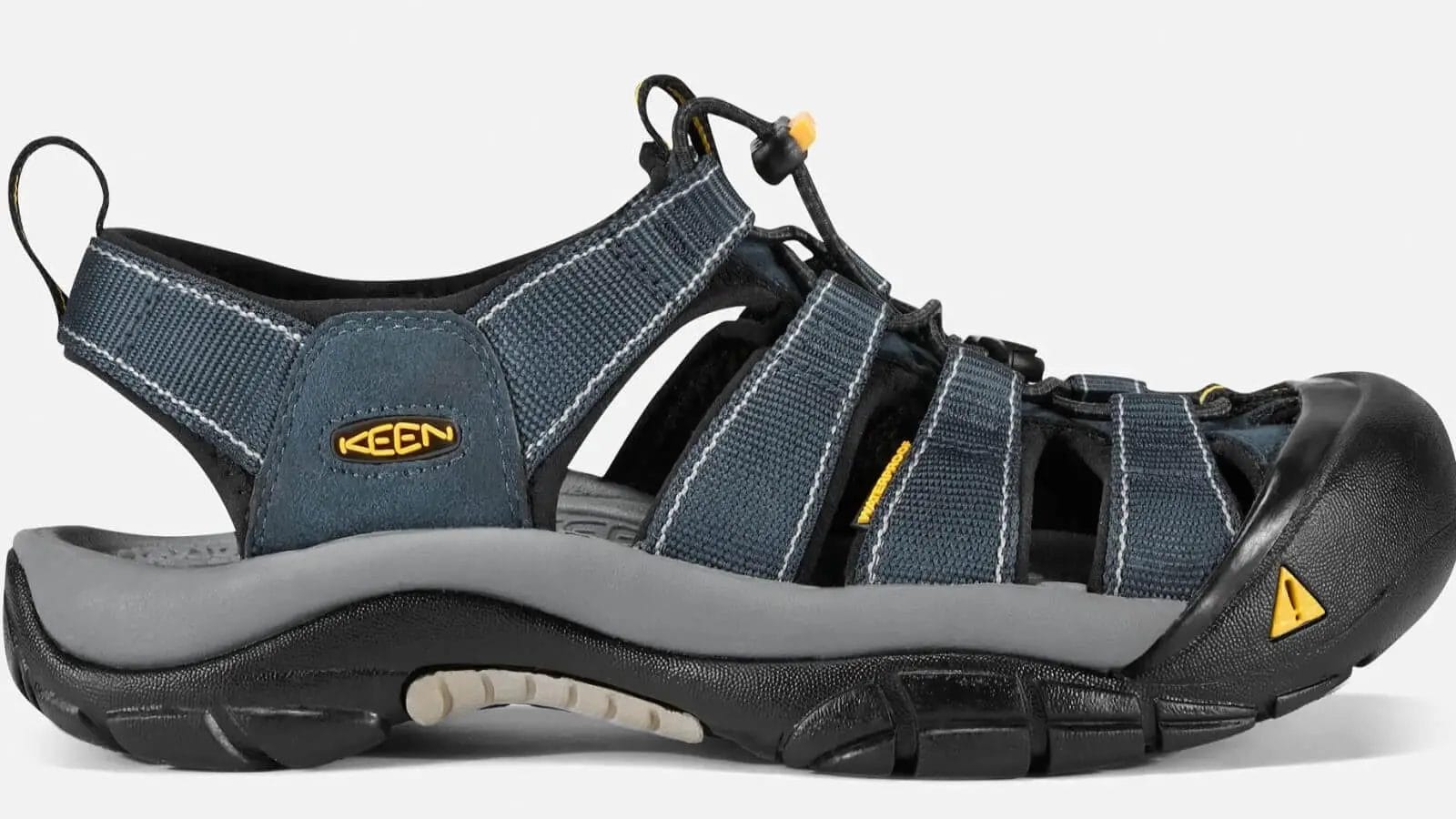
Available for Men at
Available for Women at
The KEEN Newport H2 is a high-end water sandal for hiking. It was one of the more expensive options that we tested in our research and testing process, but had great performance in terms of comfort, quality, durability, and foot protection. Despite the high expectations that come with a high price tag, it did not disappoint. This is one of the most popular KEEN models every year, and with good reason.
With technical specs that you would expect in a hiking boot, this sandal is an ideal option for those looking to get the most out of hiking or walking long distances when they know there will be water-based obstacles to traverse.
These shoes are very comfortable, and are made from strong moisture-wicking fabric. The KEEN Newport H2 ticks all the boxes for those on the hunt for a durable water shoe for hiking. It has extensive foot support and protection, and the stability to compete with expensive hiking boots when on a trek.
Performance in our testing
With a quick-dry synthetic upper, these shoes fared well when transitioning from in the water to dry land. The rubber outsole provides impressive traction when walking through a rocky riverbed, hiking on a wet trail, and even the shell-covered areas in part of our ocean testing.
However, these shoes should not be your go-to option in thick sugar sand, or if you’re swimming. These are hiking sandals, and are not ideal for swimming or for deep, soft sandy beaches.
Pros and Cons of the KEEN Newport H2 Hiking Sandal
As with all water shoes, the KEEN Newport H2 has some advantages and disadvantages we need to discuss. This is to ensure you are well-informed and getting something that’s going to meet your needs, regardless of price.
Pros
- Impressive grip with a thicker outsole, this shoe will stick like glue on slippery trails.
- This shoe is the closest in our list to a hiking boot outside of the Merrell option, and it shows.
- Strong arch support, a bonus for those suffering from plantar fasciitis or those with flat feet.
- Has built in odor control (called Cleansport NXT) that works really well. You should still dry your shoes immediately after use though.
Cons
- These are pretty heavy for a sandal. Again, more comparable to hiking boots than to a typical light-weight water shoe.
- If you are going to be wearing socks with these, you might find them to be somewhat tight.
- The removable insoles can slip around with extensive use or when jostled around too much.
Our final thoughts
This shoe is rock solid, as to be expected with offerings from KEEN. With the technical specs that compare to a hiking boot, this shoe is an ideal option for those looking to get the most out of hiking or walking long distances, when they know there will be rivers, creeks, or other wet conditions to traverse.
You can also find more details in our complete review of the KEEN Newport H2 water sandal.
2. Speedo Surf Knit Pro Water Shoes
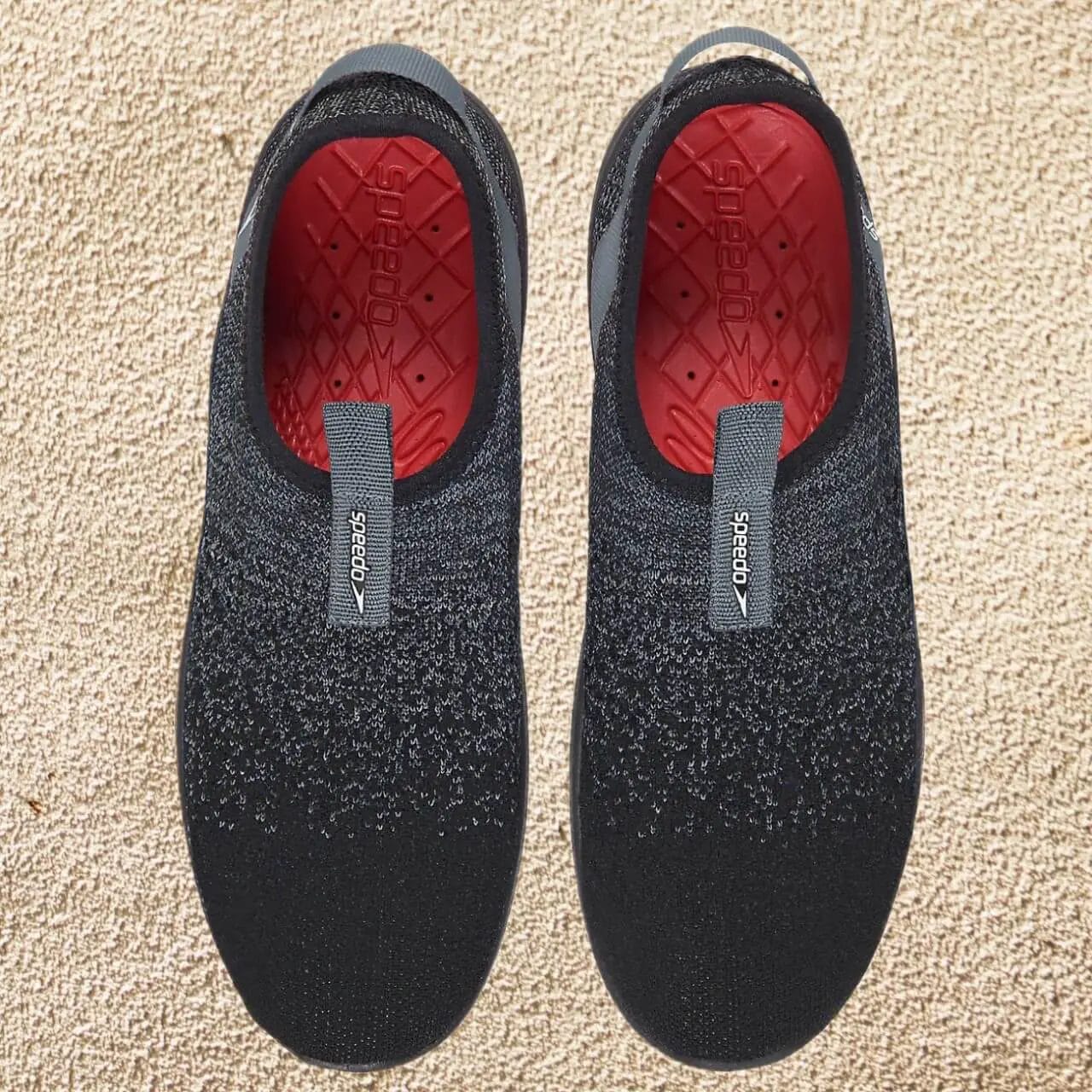
Available for Men at
Available for Women at
The Speedo Surf Knit Pro high performance water shoes are ideal for use at the beach, swimming in the ocean, or in the swimming pool. If you’re on the hunt for the strongest water shoes that are budget friendly, look no further than this option from Speedo.
Speedo makes these with a lightweight, breathable mesh upper. They also have rubberized soles, treaded for additional traction.
Performance in our testing
These shoes had the “stickiest” rubber sole of any other shoe we tested. For this reason, they worked wonderfully in hard-packed sand, the shells, and in the ocean. We didn’t do any surfing as part of our testing, but from using these on slippery rocks and in the ocean, they should perform well in that scenario. Also, the “Surf Knit” in the name suggests that is what Speedo had in mind when creating these.
The only downside is that if you want to walk around in these, the soles are quite thin. This makes them uncomfortable if you’re trying to hike over any rocky terrain, or walking through a river bed. These really shine in swimming and ocean settings, and are not made for hiking or trekking situations.
Pros and Cons of the Speedo Surf Knit Pro Water Shoes
Speedo is a well-known brand for watersports and swimming. This Surf Knit Pro option is a stylish shoe with a great grip. Nevertheless, there are advantages and disadvantages to note with the Speedo Surf Knit Pro.
Pros
- Unlike some alternatives, this water shoe does not absorb water.
- The Speedo has very sticky traction, and is ideal on wet and slippery surfaces.
- These water shoes are completely water-permeable, even when completely submerged. They are made for swimming, not keeping your feet dry.
- The patented Speedo drainage system provides complete drainage very quickly, keeping the from getting heavy when underwater.
- They have some of the fastest drying times of all of the shoes we tested.
- A breathable mesh upper and specialized rubber sole keeps these shoes ultra-lightweight even when fully immersed in water.
- While there are plenty of ugly water shoes, in our opinion the color options and styling on these are top-notch.
Cons
- In testing, we noted that the sole were very soft and thin. While this is ideal for gripping, this means these won’t perform well on rough terrains that you’re likely to find while hiking or traversing streams or creeks.
- Thinner soles on the Speedo model also means they are more prone to wearing out.
Our final thoughts
These are extremely versatile water shoes, and are the best we tested if you’re looking for something to use in the ocean or for swimming. Speedo is also a brand you can trust in terms of materials and quality construction, and they’ve made their reputation creating apparel for watersports. If you’re on the hunt for a strong swimming or surfing water shoe, and want something budget-friendly, then these are a great choice!
We also have some more details in our complete review of the Speedo Surf Knit Pro water shoes.
3. Merrell Choprock Sieve
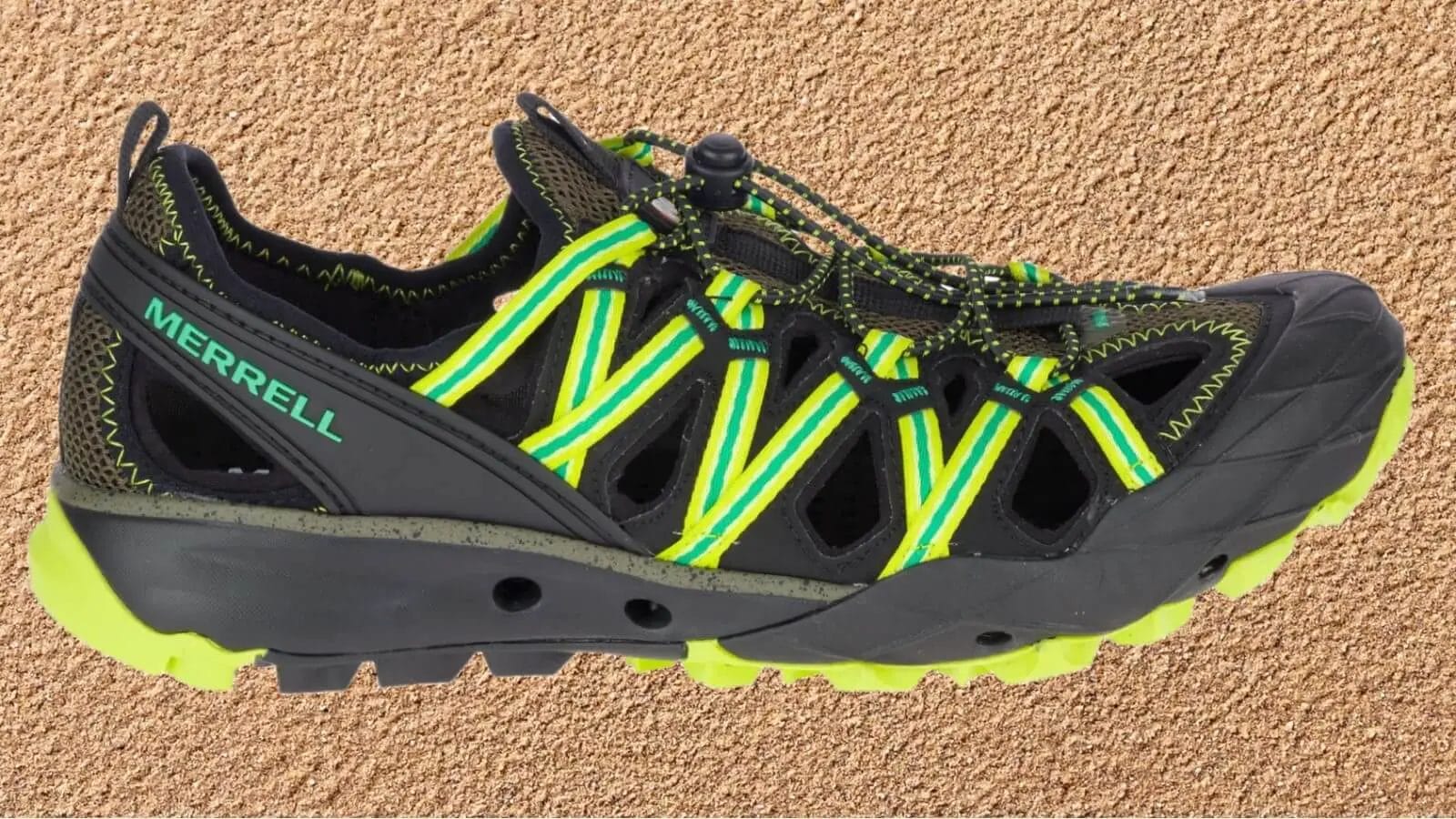
Available for Men at
Available for Women at
The Merrell Choprock Sieve is built like you’d expect a hiker-focused water shoe to be built. With quick-pull bungee lacing, Merrell designed these shoes to wrap tightly around the foot and provide a snug fit. The lacing system works amazingly well, and the laces are what Merrell refers to as “quick-action.”
If you’re looking for a more secure fit, you can tighten these laces as well. Also, the soles are sturdy and thick, keeping you from feeling rocks and rubble. In addition, the waterproof uppers provide great support without slippage and without rubbing against your foot.
Performance in our testing
These shoes performed admirably in the hiking and river test areas. The Vibram soles in this option from Merrell worked great, and we felt none of the slick and sharp surfaces present in these tests.
However, they are some of the bulkier water shoes we tested, as they are built for hiking, similar to the KEEN Newport H2’s from above. For this reason, they didn’t do as well in deep sugar sand, or when in deeper water in the ocean. This is no surprise since these are really hiking shoes, and not made for swimming about in deep water.
Pros and Cons of the the Merrell Choprock Sieve
While definitely a high quality water shoe from a company known for manufacturing some of the strongest and most durable hiking shoes around, there are, as always, pros and cons to keep in mind.
Pros
- These shoes were incredibly comfortable in all manner of hiking and everyday conditions.
- Putting them on and taking them off was a breeze, and the bungee lacing system was really effective.
- We expected them to take forever to dry because of the bulkiness, but were pleasantly surprised by how quick-drying they were.
- The treads on the soles provide incredible grip on every surface we tested them on.
- Again, the lacing system is the best, and everyone should be using something similar.
- The stiff, thick soles make them ideal for hiking in conditions that will submerge your feet (think: The Narrows at Zion).
Cons
- With continuous use, the soles can quickly wear down. With this wear comes a loss of grip.
- When hiking, the openings on the shoes tend to let in dirt and small rocks. This can get annoying depending on the terrain you’re in.
Our final thoughts
These shoes fared wonderfully in the hiking tests, but got quickly bogged down and heavy in less “solid” terrains such as deep sand. However, if you are hiking and don’t mind the occasional bit of dirt or small rocks that can sneak in through the open style of the shoe, then these are a robust and comfortable option that will dry out quickly as you hike.
We have a complete review of Merrell’s Choprock Sieve with some more pictures and testing results.
4. Nike Canyon and Owaysis Water Sandals
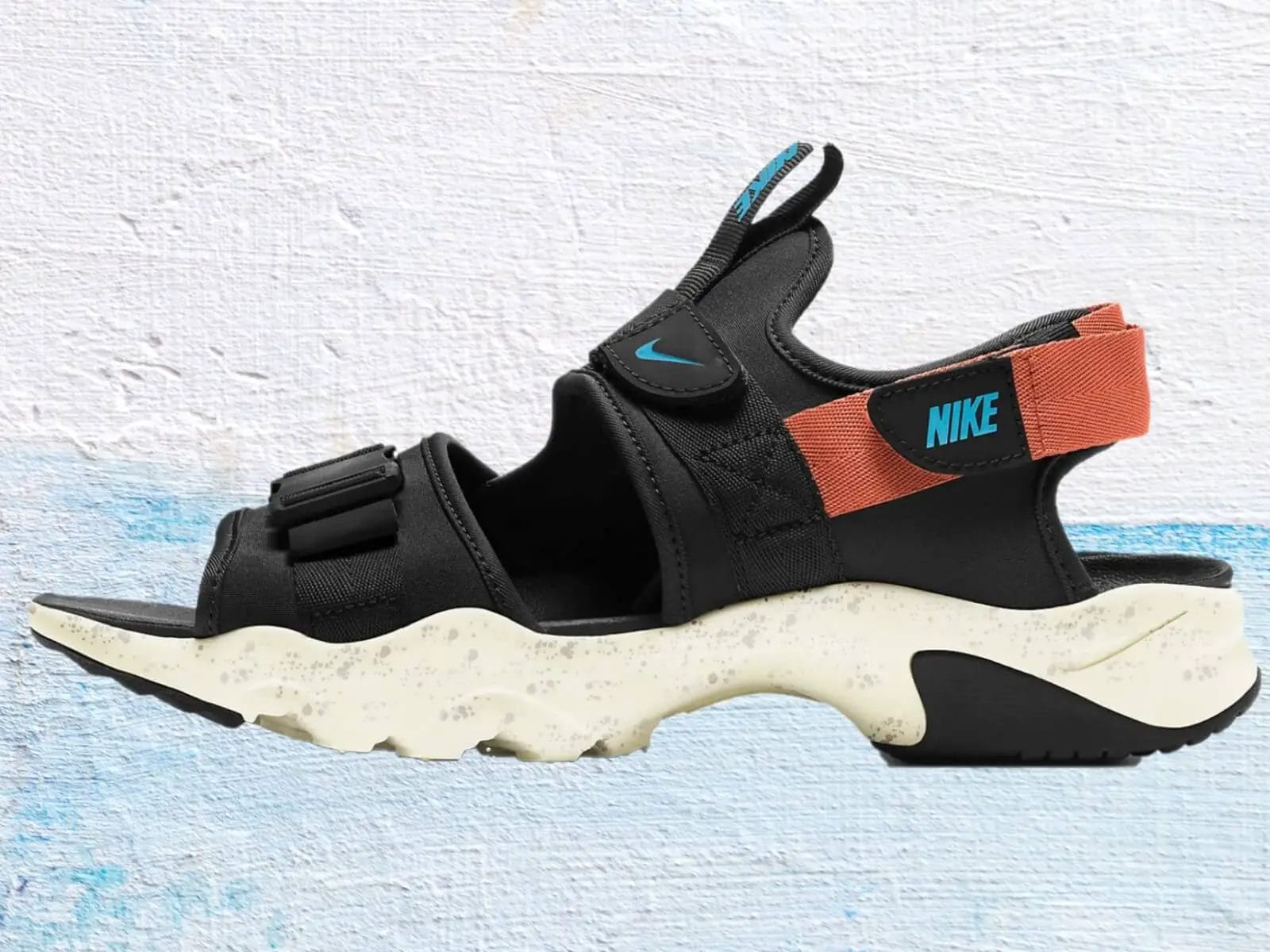
Available for Men at
Available for Women at
One of the two traditional sandal-style water shoes on our list (along with the Crocs Swiftwater Expedition below), these Nike Water Sandals are most notable for their very cushioned soles. Seriously, these are the best padded soles on a water shoe that we’ve found and have an almost memory-foam feel to them. Your foot will sink into the footbed a little as it conforms to your foot shape. This makes them an ideal choice if you’re having foot pain, and they also provide a lot of arch support if you have flat feet. They don’t accommodate orthotic inserts or anything, so if you need more customized orthotics, then you’ll have to look elsewhere, but if you just need a comfortable, padded, and supportive insole then these are great.
The other thing to note is that Nike has split their water sandal offering into the Canyon for men and the Owaysis for women. They are really similar, but not completely identical. We tested them both out, and the main design features are the same. The differences are in a bit of styling on the straps of the upper, and the tread on the outsole. The sole itself is essentially the same in terms of padding and comfort, and the materials in the straps of the upper are also the same. We feel comfortable lumping them together as a single model for the purposes of our list and testing.
Performance in our testing
These sandals performed better than we expected in the hiking and river areas of our tests. Nike does market them as athletic sandals, and suggests they are made for hiking and other serious use. We’re not so sure they are quite as good for hiking as the more robuse robust KEEN and Merrell options, but they do hold up pretty well! The thick, padded sole goes a long way toward absorbing rough terrain underfoot, and the outsole has good traction.
That said, we think these are much better suited toward lighter uses. They’re a great summer sandal for walking around areas that might get a bit wet, walking to and from the golf course, or hanging out around the pool or beach. Areas where you want a cool shoe that won’t mind getting wet, but not a water shoe that is going to stand up to heavy-duty use on trails or in the ocean.
5. Salomon Crossamphibian Swift 2
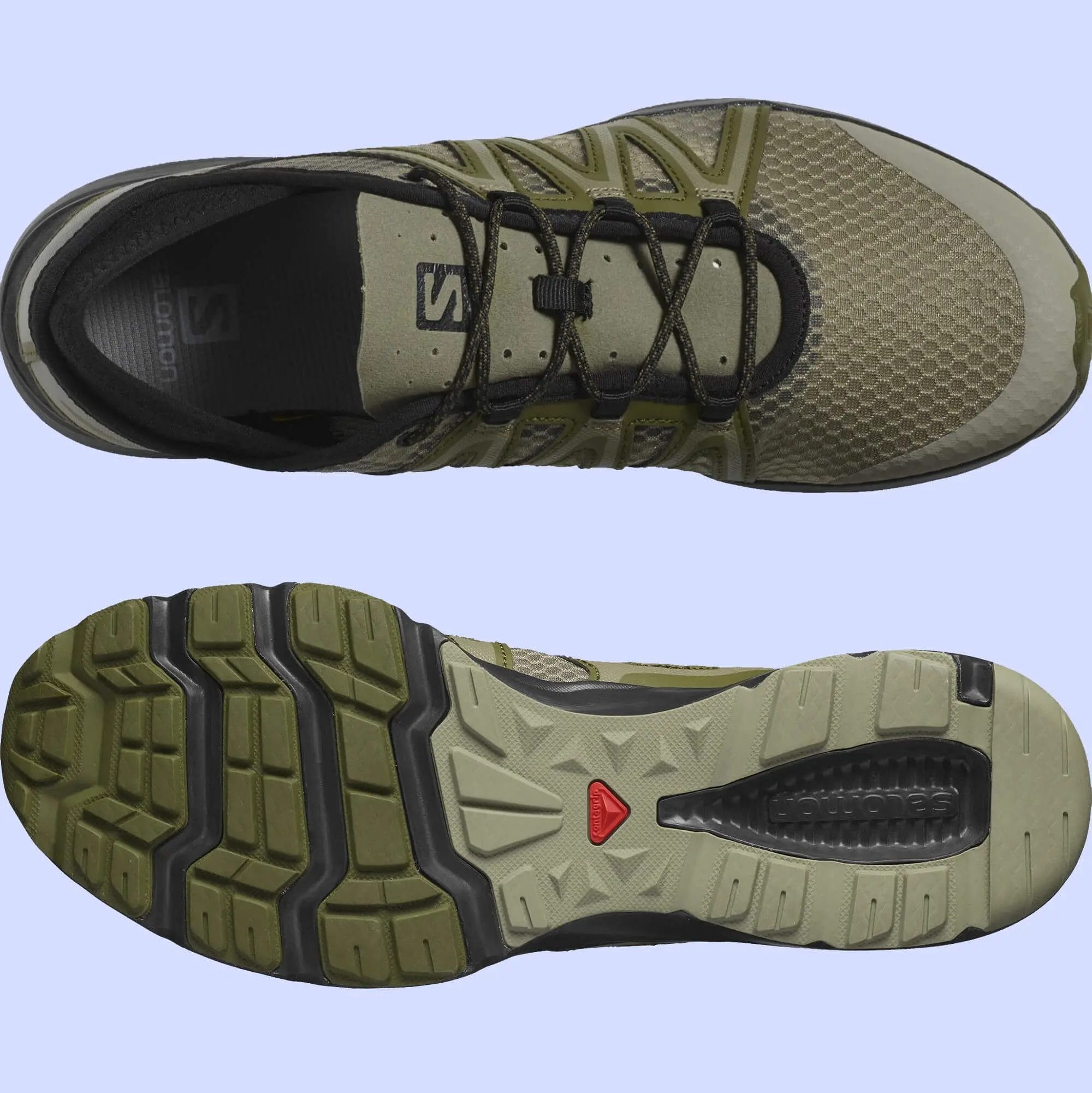
Available for Men at
Available for Women at
The Salomon Crossamphibian Swift 2 Water Shoes are some slick, smart-looking water shoes. We’ve tried to give you a good look at the lacing and outsole setup of the shoe that allows these to fit tight like a running shoe, get great grip on trails, and still drain water and dry quickly. These are ideal for if you want a real athletic shoe that won’t get bogged down in the water, and we recommend them for fishing, boating, or any kind of running or athletic activity where you’re likely to go through more than ankle-deep water at some point. They’re also good options for outdoor tasks like mowing the lawn or pulling weeds since they are extremely well-ventilated and keep your feet cooler than a traditional closed off shoe. We tested them in the heat and humidity of the Florida summer, so we know of what we speak.
These shoes are fast-drying and provide full cooling of your feet. This helps your feet remain comfortable throughout the day. These shoe are solid, and are the closest looking to sneakers that we tested. You have to really zoom in on the sole or the uppers to see the ventilation and drainage features that make them water shoes.
While these are from Salomon, and we definitely feel comfortable classifying them as a “running shoe,” we caution that these are not for seriously long trail runs. Salomon makes their higher end S/LAB trail running shoes for pro trail runners, but they’re a bit out of scope for this article. The Crossamphibian Swift 2 is great for more moderate runs, and for general athletic activity in watery environments. It also costs less than half of what the S/LAB models cost and is easier to find.
Performance in our testing
These shoes performed pretty well across all of our testing. We noticed that the outsoles were not the most grippy of the bunch, however they still provided decent traction on most surfaces. These are closer to a running shoe than a hiking shoe though.
The thinner outsoles proved a bit inconvenient when we started hiking through some brushy patches on the trail, and we were definitely able to feel sticks and rocks when stepping on them. But, on the beach, in the river, and even in thigh-high water in the ocean, these shoes were top notch. We think these are ideal for river situations or semi-manicured trail runs.
Pros and Cons of the Salomon Crossamphibian Swift 2 Water Shoe
There are plenty of great things about this offering from Salomon, from a thin, ventilated tongue to a heel cup that conforms to the shape of the foot, traction-enhancing rubber soles and more. Nevertheless, there are advantages and disadvantages that we present to you, as is our habit, in bullet point form.
Pros
- We were impressed with the level of quality for the price with these shoes. Many trail runners list Salomon as a top brand, but sometimes their offerings break the bank. The price point here is much more budget-friendly, though not exactly cheap.
- The shoes are very versatile for water shoes, and are ideal for both wet and dry conditions.
- They were some of the fastest drying shoes in our testing, which was surprising since they are a full athletic style shoe.
- Salomon’s shoes provide open mesh for advanced breathability.
- These shoes have a stretchable, flexible heel for perfect fit for any feet.
- Salomon shoes are extremely light, and you’ll carry them in a backpack easily.
Cons
- We found the outsoles tend to slip on wetter, slick surfaces.
- While ideal for wet and dry conditions, they are not quite as robust as some of the more hiking-focused options. These are closer to a sneaker than a hiking shoe.
Our final thoughts
Like other shoes from Salomon that we’ve tested over the years, the Salomon Crossamphibian Swift 2 Water Shoe was impressive in terms of quality and design. It’s also considerably less expensive than some of the shoes people know Salomon for. It’s a great all-around option, and definitely something we recommend.
For those who are not dealing with backwoods hiking in their water activities (i.e., those looking at kayaking, boating, time at the beach, fishing, etc), these water shoes are a wonderful option, and were some of the best water shoes we tested overall.
6. Body Glove Sidewinder
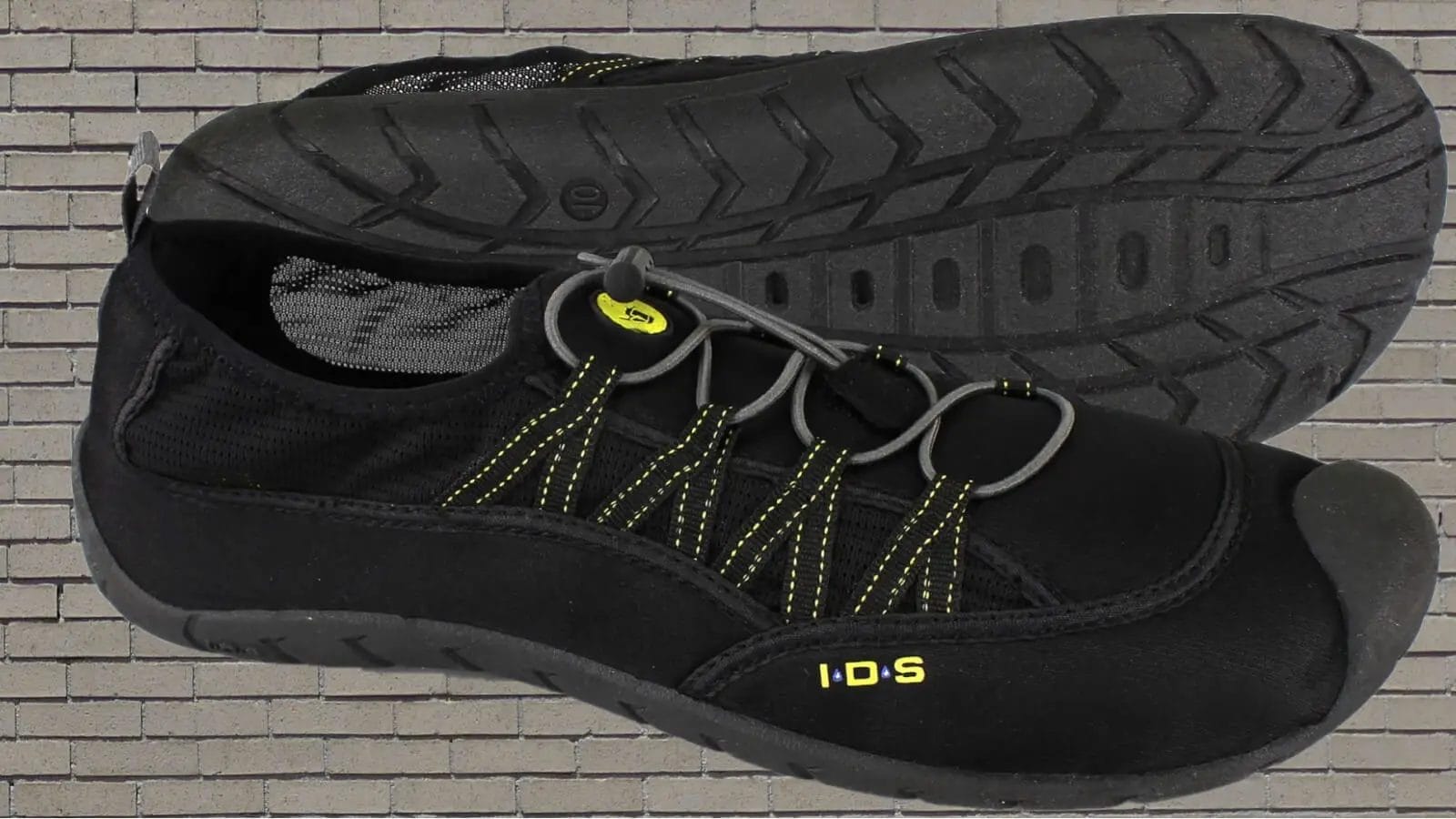
Available for Men at
Available for Women at
On the hunt for a minimalist water shoe option that performs just as expected without frills, bells, or whistles? Look no further than the Body Glove Sidewinder. The clean, slick look of the Sidewinder ensures that it is cool to wear. Don’t discount the simplistic design though. It hides some great features that we would expect from a watersports-focused brand like Body Glove. After all, along with Speedo, they are the best known watersports brand on our list.
Performance in our testing
These shoes performed well in all of our testing, period. The breathable and quick-drying textile upper has synthetic overlays, and the drainage was top notch. We also appreciated the quick lacing system for tightening the shoe. It fits like a slip on in that it has a solid, full foot enclosure, but then has a quick locking lace system on top of that so you can tighten up the shoe around your foot as needed.
Although these are clearly designed for use in the ocean, for swimming, and at the beach, we went ahead and tested them out in some hiking conditions. Never know when your beach trip will involve some unexpected adventures, and they did surprisingly well! Meanwhile, the water-focused outsole’s rubber design provided great grip on slick surfaces. Along with the Speedo option, this is our top shoe for actually being in the water and swimming, not just for crossing water or getting wet.
Pros and Cons of the Body Glove Sidewinder Water Shoe
Even though the Body Glove Sidewinder performed well in our tests, there are always pros and cons. This was no exception. Here are some of the advantages and disadvantages we found.
Pros
- Incredibly simple to slip on, with a quick lacing system for optimal fit.
- The lacing system prevented some of the looseness or slipping that you sometimes get with pure slip on water shoes.
- Solid grip on slick surfaces, providing traction even in the most slippery situations.
- Minimalist design ensures there are no small pieces or buckles that will fail over time, and no little protrusions that might dig into your foot while out on the water.
Cons
- As with most shoes focused on swimming and use in the water, the rubber sole is very thin. We worry about durability over time if you’re walking any significant distances on dry land.
- Although the lacing system allows for a tighter fit, it makes them a bit slower to get on and off than a pure slip-on.
Our final thoughts
As stated, the Body Glove Sidewinder is one of the best pure swimming and ocean-going shoes we tested at Little Talbot State Park. If you are planning on being in the ocean or pool, this is one of our favorite options.
7. Crocs Swiftwater Expedition
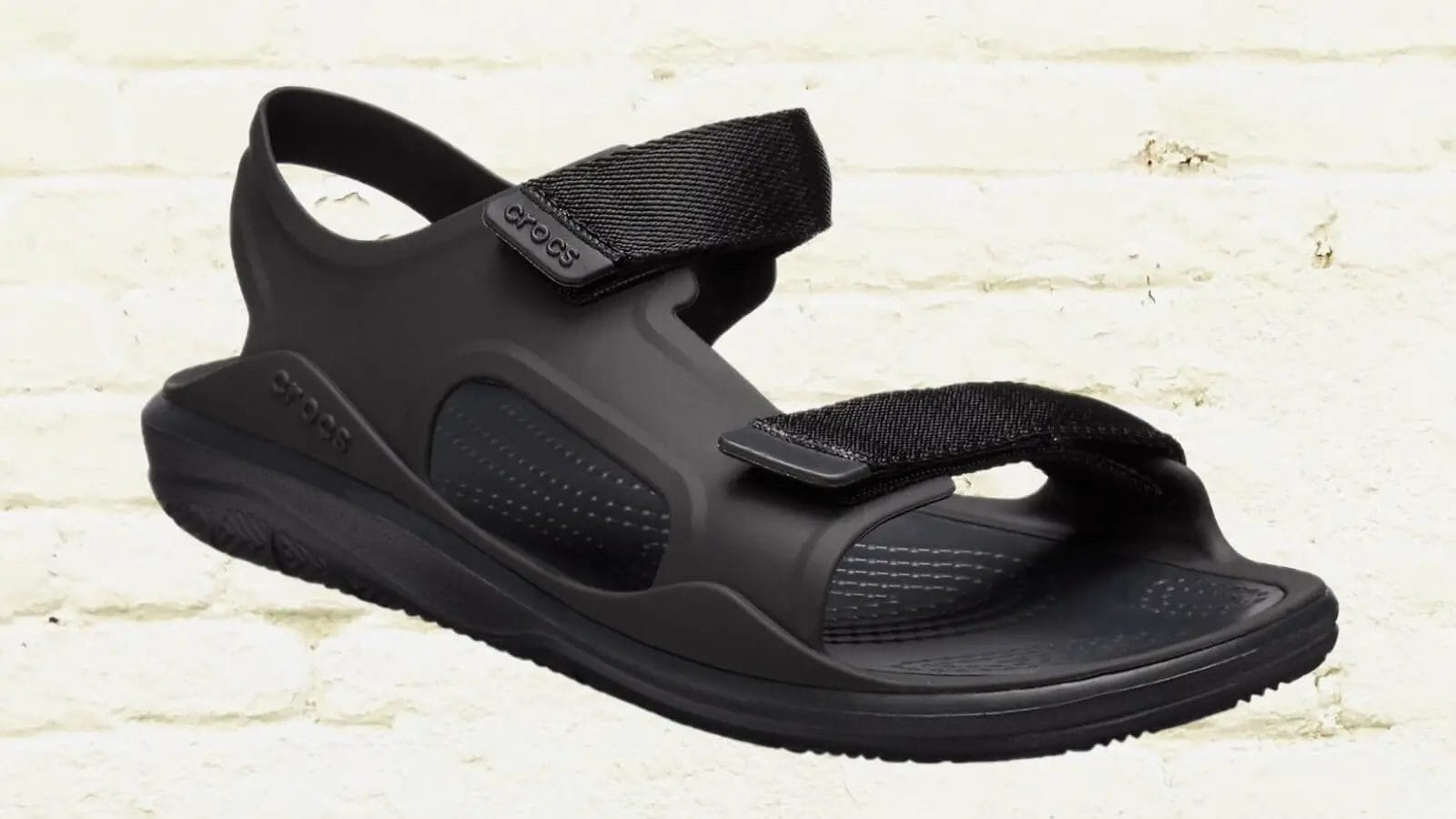
Available for Men at
Available for Women at
Crocs sometimes get a bad rap for their looks. It’s not warranted, and even with their unusual styling, there is no denying the fact that Crocs are one of the champions of the water shoe world. They are tough, they are lightweight, and they dry very quickly. The Crocs Swiftwater Expedition Sandal is no exception.
A solid water shoe, this option is great for standard water-related activities. While we would not recommend going on a ten-mile hike in these, for standard uses, like walking about in the water, or exploring rocky beaches and river banks, or even relaxing on a kayak, canoe or boat, you can’t go wrong with this option. There are plenty of features in this simplistic shoe as well, from a Croslite foam cushion, to hook and loop closures and more.
Performance in our testing
These shoes performed well in our testing. They were all around a solid choice, however, since these are open sandals, they’re going to let in lots of sand if you take them into an area with deep sand.
The hiking experience left a little bit to be desired as well. The outsole is not the toughest out there. However, in the riverbed, ocean, shells, and more, the Swiftwater Expedition was hard to beat. They’re a really comfortable all around sandal for walking about or relaxing or any less strenuous use case.
Pros and Cons of the Crocs Swiftwater Expedition Sandal
Even though the Crocs Swiftwater Expedition performed well across all of our tests, there are always pros and cons to every water shoe. Here are some of them.
Pros
- An open toe design makes them look a little more stylish than the usual wrap around toe bumper you find on Crocs sandals.
- With a cult following, these Crocs are practical, hard-wearing and tough.
- Some of the most comfortable shoes we tested due to the foam cushioning.
- At the low end of the price range expected for Crocs brand water shoes.
Cons
- The hook and loop straps (i.e., Velcro) will get sand caught in them immediately.
- The open sandal design means this will let in sand and debris if you’re hiking or on a beach with light sand.
- Not quite as stylish as some other options. Depending on how you feel about Crocs styling, of course.
Our final thoughts
For standard uses, like walking about in water, or exploring rocky river banks, shell-covered areas of wet sand, or even relaxing on a kayak, these are a good option. Since they are open sandals, they will also keep your feet cooler than closed shoe options.
For more details, read our complete review of the Crocs Swiftwater Expedition sandal.
8. Vibram FiveFingers V-Aqua
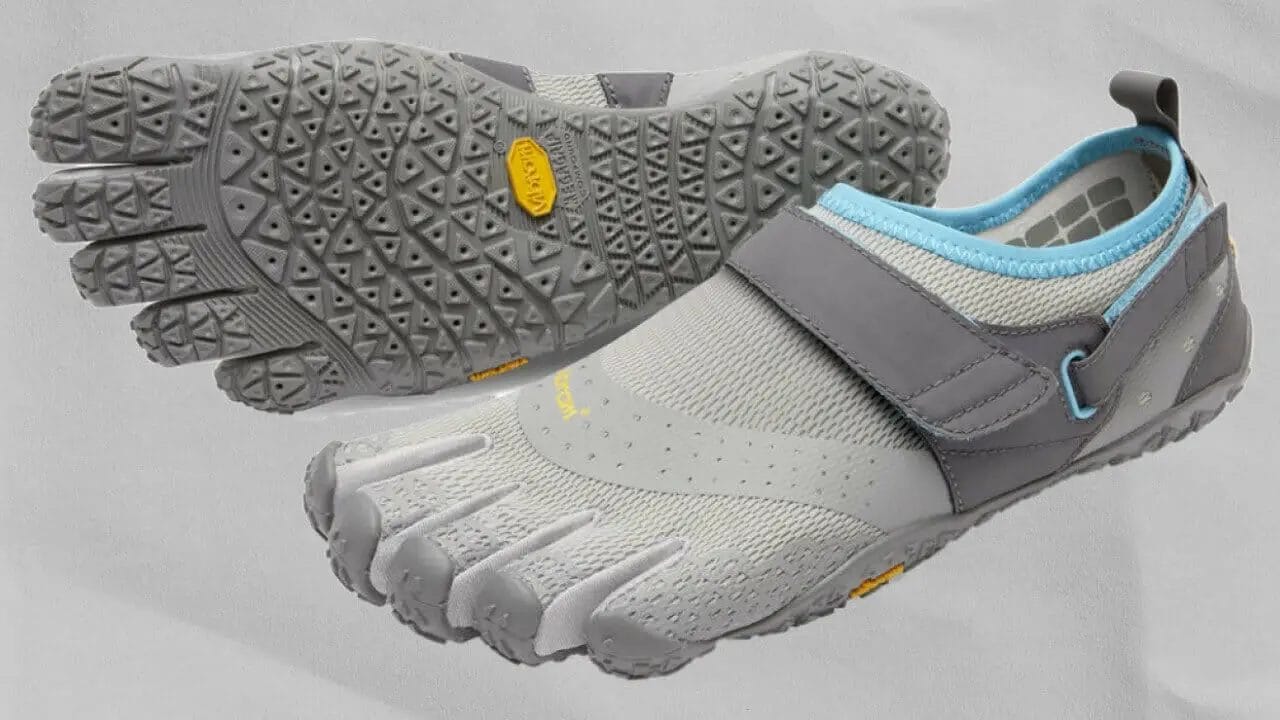
Available for Men at
Available for Women at
Vibram initiated the toe-shoe trend with the Vibram FiveFingers line up, and they are continuing that tradition with the introduction of the Vibram FiveFingers V-Aqua Water Shoe. These types of shoes are wildly popular as water shoes, and for good reason: they really work. Whether in the sand, on hiking trails, or on the beach and even in the ocean, these shoes performed really well.
The biggest advantage of the toe-shoe design for water shoes is that they work well for hiking or swimming. Most shoes on our list fell into bulkier hiking models, or thinner mesh swimming shoes. The V-Aqua managed to give you protection and grip while walking and hiking, but without the bulk. This allowed them to function while swimming much better than the other hiking water shoe options.
Performance in our testing
These shoes are really made for the beach. They did great in the ocean at all depths, navigated the rocky and shell-covered shoreline easily, and gave us zero issues while splashing through the river hiking trail. However, when the hiking got a little more serious, the thin outsole proved problematic. This is always a trade off: you need a thicker outsole for a hiking shoe to absorb sharp rocks and other obstacles, but that thick sole makes the shoes less than ideal in the ocean or while swimming. The V-Aqua strikes a nice balance, and is great in the ocean and on lighter hiking excursions, but you’ll want something with a thicker sole if you’re doing some serious river hiking.
Pros and Cons of the Vibrm FiveFingers V-Aqua Water Shoes
The V-Aqua is stylish and has great grip on slick surfaces. Nevertheless, there are advantages and disadvantages which we present here.
Pros
- Separate toe features mean these are some of the most versatile shoes we tested, working great on the beach, while swimming, and while walking around.
- The soles provided tremendous grip when climbing over wet and rocky terrains.
Cons
- A lot of other reviewers report these shoes can start to smell after extended use. We didn’t see that, but we haven’t used them for the same length of time as others.
- If you aren’t a fan of the separate toe craze, then you won’t be a fan of the V-Aqua.
- Order a size up. We had to return them and size up on our first attempt with these.
Our final thoughts
These are very versatile water shoes, and are some of the best we tested. Vibram is a company that knows water sports, makes great, flexible soles for their shoes, and has a unique angle with the FiveFingers design. If you’re on the hunt for a great pair of water shoes for activities on the beach, or for swimming or kayaking, then this is a solid option. If you want a hard-core hiker, then we’d go with KEEN or Merrell because of the thin outsole on the V-Aqua.
For more details, read our complete review of the Vibram FiveFingers V-Aqua Water Shoe.
9. ALEADER Quick Drying Water Shoes
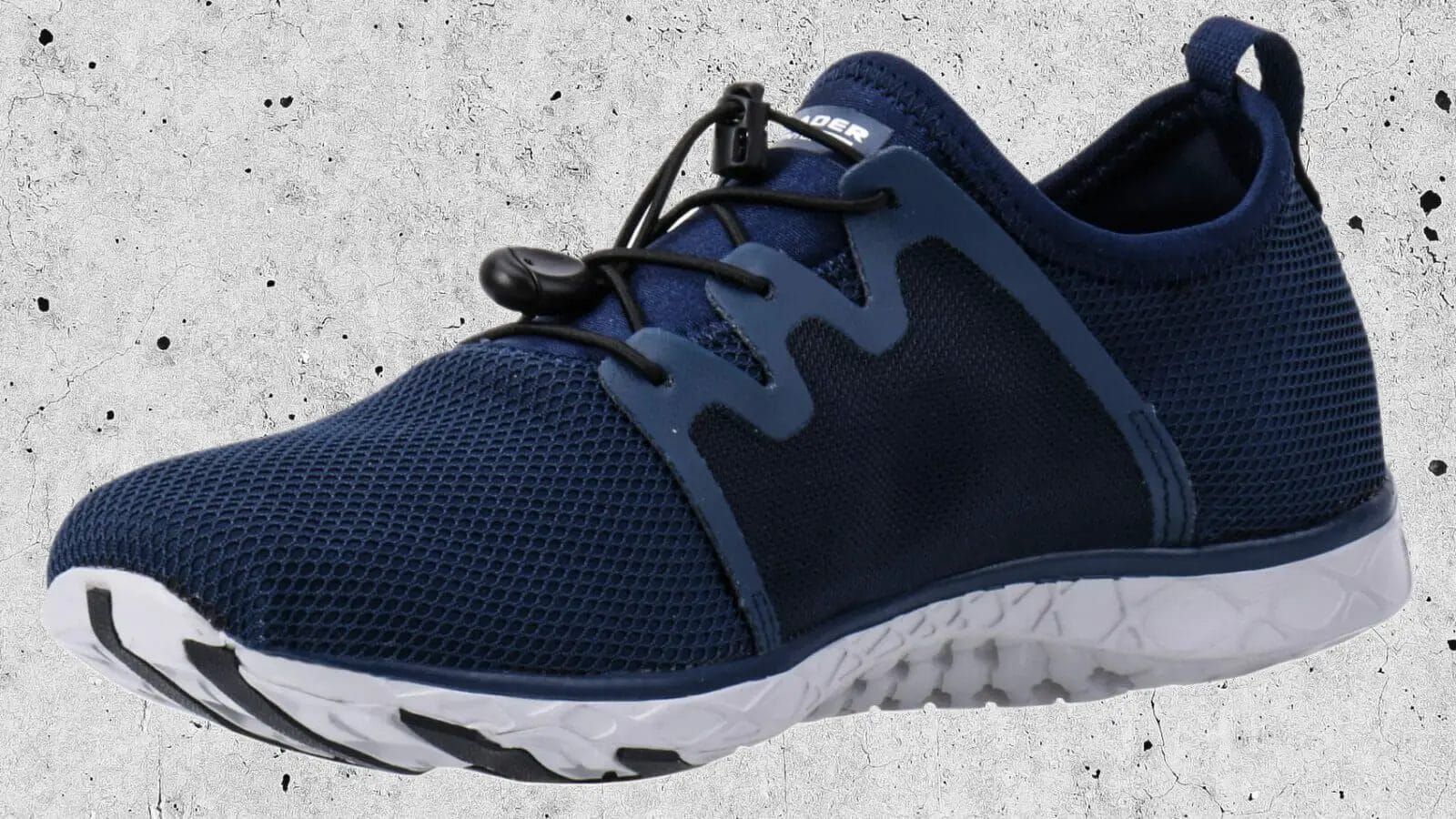
Available for Men at
Available for Women at
While one of the least expensive options on our list, the ALEADER Quick Drying Aqua Water Shoe is a nice blend of style, function, and value. It is a conventionally-styled sports shoe with a sole designed to quickly drain water (which they call X-DRAIN), and a very thin mesh upper that won’t absorb water.
No bells and whistles, no funky shapes. It is made from a breathable, mesh upper and a lightweight rubber outsole with plenty of drainage. This shoe will work in most terrains and can go from dry to fully submerged without skipping a beat. The rubber sole provided more traction and shock absorption than we expected just from looking at it.
Meanwhile, the fast-drying sock liner and internal cushioning system creates a dry, cool environment for your feet. Additionally, an added section for lateral support ensures your feet stay snug when in the water.
Performance in our testing
This extremely lightweight water shoe goes where most athletic style shoes don’t dare to go. With the exception of the Salomon Crossamphibian further up the list, these were the closest shoes to actual sneakers. However, they performed quite well in the ocean, riverbed, over shells, and in sugar sand. Sand did get in our feet, though, and we wanted to see better hiking performance.
Pros and Cons of the ALEADER Quick Drying Aqua Water Shoes
While the ALEADER has a lot of great features, such as fluid flow, ComfortDry sock liners, contrast stitching for a supportive fit and more, there are always going to be points of concern. Here are some of the advantages and disadvantages that we found.
Pros
- Some of the best weight-to-function shoes we found out of everything we tested.
- Very lightweight, extremely versatile, inconspicuous out of the water, and quick to dry.
- Strong grip makes it one of the best possibilities for a boat shoe.
- Water drainage through the outsole was the fastest we experienced in our testing.
Cons
- The uppers have larger mesh holes, which can be a bit of a burden when walking through sand.
- When hiking, we noted that these shoes were find for shorter jaunts, but would falter in longer hikes. They just are not as robust as dedicated hiking shoes.
Our final thoughts
For the price, it is hard to beat the ALEADER Quick Drying Aqua Water Shoe. It is the ideal mix of function, styles, and value. An inconspicuous looking water shoe, you can wear these in town or to grab lunch and you won’t look like a beach bum. We think these are great all-around choice!
For more details, you can read our complete review of the ALEADER Quick Drying Aqua Water Shoes.
10. L-Run Barefoot Swim Shoes
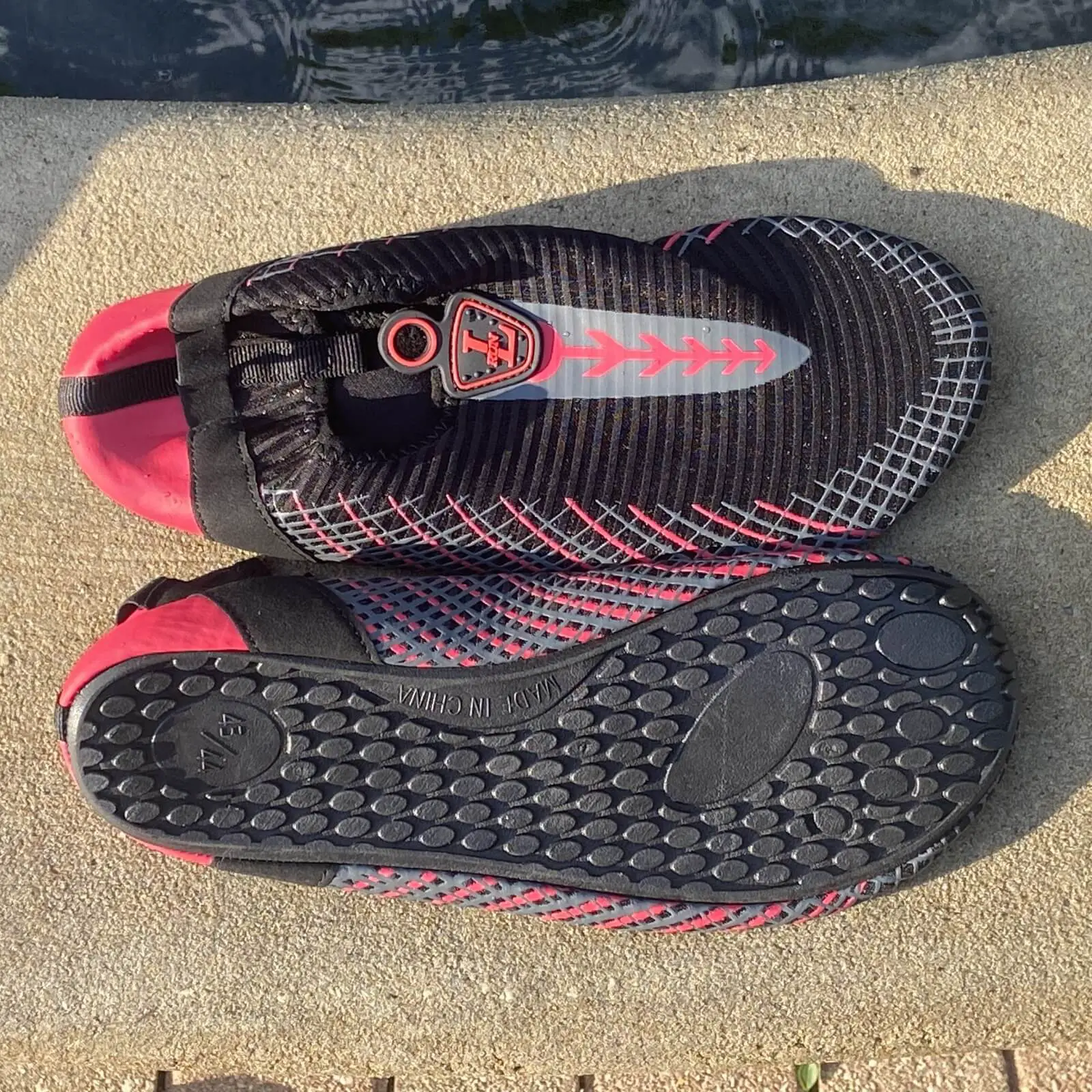
Available for Men and Women at
For being by far the most minimal shoe we tested, we were quite impressed with the performance of the L-Run Barefoot Swim Shoes. These shoes feature an upper with a stretching, breathable ultra-light weight fabric for fast drying and cross ventilation, which gives excellent flexibility and comfort.
As the name implies, these are really designed for use while swimming and when submerged in water. They are not a hiking shoe, and won’t do well in rocky terrain or river beds, the soles are just too thin to provide protection in those circumstances. The soles do provide solid protection against shells and small objects, and will keep your feet clean and cool on hot sand, or walking to and from the beach.
Performance in our testing
s expected, with next to no sole, the L-Run shoes did not perform great in hiking or the beach area with larger sharp shells. However, the performance in the water and across sand and while walking around on paved paths to and from the beach was fantastic. These shoes were really unbeatable as a pure swimming shoe, and were the closest thing we found to wearing no shoes at all.
Pros and Cons of the L-Run Barefoot Swim Shoes
As expected with any shoe, there are pros and cons. The L-Run swim shoes are no exception, and below we give you some of the things we noticed about these during our testing.
Pros
- These were by far the lightest and most minimal water shoes we tested.
- As such, they were also the most affordable pair in our testing, and some of the cheapest available anywhere.
- They performed extremely well in the ocean, and would make great pool shoes.
- The outsole, while thin and cheap, was surprisingly grippy on rocks.
Cons
- These fit the price. They are inexpensively made, and will likely fall apart faster than others. They’ll be great for a summer, or for a beach vacation, but don’t expect them to last a lifetime.
- The lack of a thicker outsole means that these shoes did not do well when hiking or walking on sharp shells.
- There were times when we were trying to climb around a bit that these felt too loose on our feet. Without laces or anyway to tighten them, you’re relying on the stretch upper to hold the shoes in place, which was not perfect when out of the water for us.
Our final thoughts
For being by far the cheapest water shoe on our list, we were really impressed with the value-adjusted performance we got out of these. Overall, if you are looking for something that is cheap and will last through a vacation or for a single summer, then this is a good way to go!
For more details read our complete review of the L-Run Unisex Barefoot Skin Shoes.
Things to Look Out for in Water Shoes
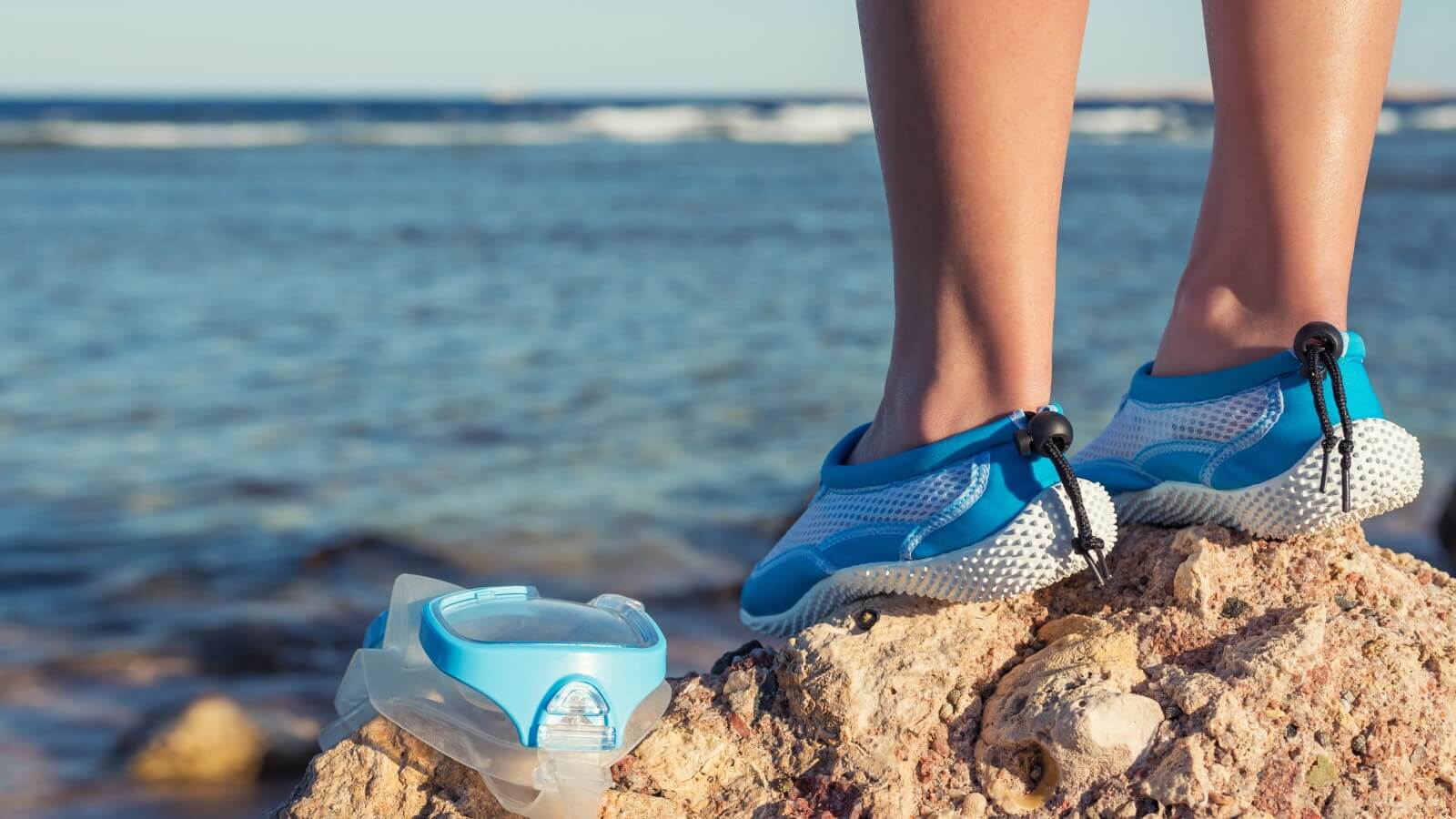
There are plenty of things that you need to look out for when shopping for water shoes. Some of the most important features are size, insoles, outsoles, material composition, comfort levels, shoe durability, and breathability. Let’s check out each one of these features, with examples of how some of our selected shoes compared in the factors.
In addition to the below features, a concern that often comes up is about the minimalist nature of water shoes. Few of them offer much in terms of arch support or cushioning. Speaking to Today, Dr. Emily Splichal said,
Most of the water shoes that are currently on trend offer a more minimal, less-structured design. This isn’t necessarily a bad thing as we don’t always need to have tons of cushioning and arch support…If you are looking for an alternative to flip-flops then I see no concern as a podiatrist. However, the exception to this is for those with extreme foot types such as flat feet, or those with foot pain, including plantar fasciitis.
Thankfully, there are some cushioned and supportive options on our list for those who do have more extreme foot types.
Size
A snug fit is essential when it comes to water shoes. They have a tendency toward excessive give when wet that can lead to an uncomfortable, loose feel around your feet.
Snug fits also mean that the water shoe will not slide or slip off when moving around in the water. Additionally, a snug fit reduces the chance of the shoes causing chafing or irritation on your feet.
Many manufacturers of water shoes carry standard sizing. Most higher-end brands also provide wide (usually denoted with a W or D) and slim (usually denoted with an N) options for fitting. For this reason, it’s important to both read reviews and check sizing charts before making a purchase.
In addition, check out how the fastening systems work on the shoe (if there are any). Also, look to whether they are using any laces or some type of bungee pull system. These should be sturdy enough to maintain the shoes fit and keep them firmly in place on your feet.
How Our Water Shoes Fared
It almost seemed as if the more minimalist the structure of the water shoe was in our testing, the less snug the fit was. This makes sense, as shoes with more straps and pieces of cloth and stitching would naturally cinch more tightly around the foot.
The L-Run and Crocs Swiftwater Expedition sandal were the least snug, while the Vibram V-Aqua was the most snug.
Insoles
Water shoes are not waterproof. Instead, they should let some water in, so they can let some water out. Insoles of shoes for water sports are more often than not incredibly flexible. They provide cushioning and breathability, too, and dry quickly and drain easily.
Some water shoes feature fixed insoles. These shoes can slow down the drying time, however, they are generally more robust and provide more support for your feet. They also stay put well when pulling the wet shoes off at the end of a long day in the water.
How Our Water Shoes Fared
A few of our options, like the Salomon Crossamphibian, had removable insoles. While these were ideal for those who have custom orthotics for plantar fasciitis or other foot conditions, they could become cumbersome and uncomfortable if they detach from the bottom part of the shoe.
Outsoles
Maybe you want your water shoe to fit like a sock. However, maybe at the same time you want a solid, thick bottom to ensure your shoes protect your feet against sharp or rocky terrain. When this is the case, thicker soles with water drainage and gripping lugs are a great choice for hiking, shells, and rocks.
Alternatively, if you are spending most of your time in the water, or sitting in a boat or kayak, you can get away with lighter, more breathable, thinner and flexible outsoles. Whatever water-centric activity you are engaging in, be sure that the outsole is durable with strong traction and grip, as well as a method to drain water away quickly.
How Our Water Shoes Fared
Maybe you want your water shoe to fit like a sock. However, maybe at the same time you want a solid, thick bottom to ensure your shoes protect your feet against sharp or rocky terrain. When this is the case, thicker soles with water drainage and gripping lugs are a great choice for hiking, shells, and rocks.
Alternatively, if you are spending most of your time in the water, or sitting in a boat or kayak, you can get away with lighter, more breathable, thinner and flexible outsoles. Whatever water-centric activity you are engaging in, be sure that the outsole is durable with strong traction and grip, as well as a method to drain water away quickly.
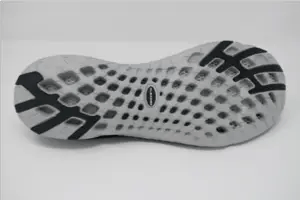
ALEADER quick drying aqua sock outsole detail
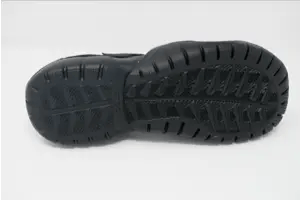
Crocs Swiftwater Mesh Sandal outsole detail
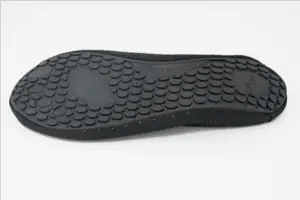
L-Run unisex water shoe outsole detail
Material Composition
Most brand and manufacturers make their water shoes out of some form of synthetic mesh. All of the shoes we tested were synthetic mesh variations, as well as a rubber outsole. The material composition typically depends on the type of activity they designed the shoe for.
Mesh water shoes allow water to drain easily, dry quickly, and allow for ventilation around your foot. This makes the shoes ideal for hiking, boating, kayaking, swimming, and more general activities.
How Our Water Shoes Fared
The shoes we tested all had synthetic mesh uppers and rubber outsoles. However, we saw a number of different shoe types use these materials in differing ways to get meet different performance criteria. Just because the materials are the same, the way manufacturers utilized the materials leads to wildly different products in the end.
For example, ALEADER used thinner, less cumbersome mesh than KEEN, but KEEN’s thick, more durable mesh made it the perfect water shoe for hiking.
Levels of Comfort
Shoes that keep you comfortable in both dry and wet conditions are crucial. You won’t change into your water shoes when you’re already in the water. They need to work out of the water as well. For this reason, research the cushioning, design, and materials ahead of time to get the most out of your next water shoe purchase.
There are plenty of features that lead to comfortable water shoes. From thicker rubber outsoles to throat and heel padding, from tabs for easily taking them on and off to padded mesh on the inside of the insole. These all work together to ensure comfort for your feet in the water, but also maintain comfort on land or while they dry.
Remember, lighter weight, quick to drain, and light soles prevent the shoes from getting heavy and water-logged. This feeling causes irritation, and leads to your feet feeling weighed down.
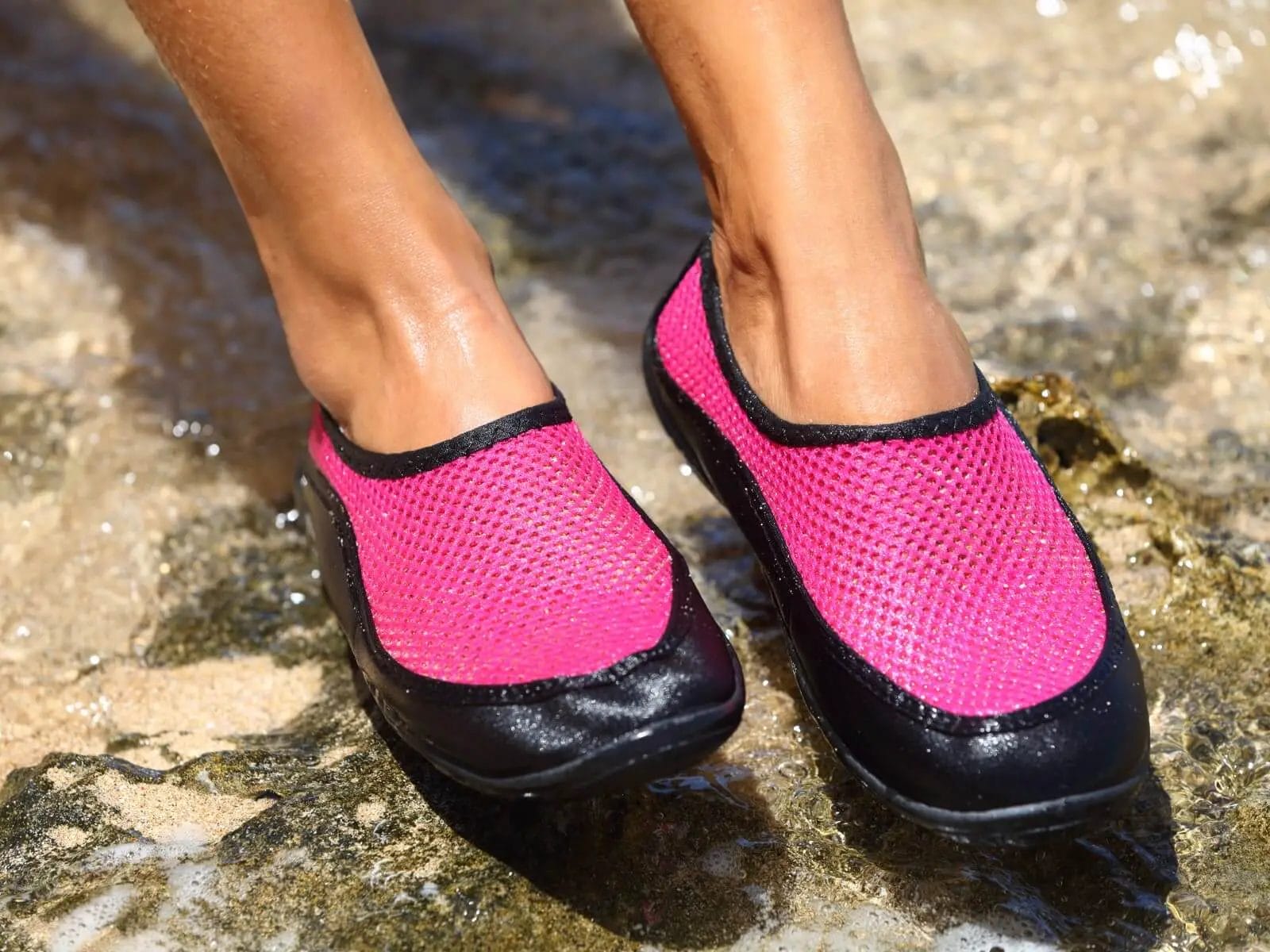
Durability
While we mentioned the importance of lightweight water shoes, you also want something tough enough to handle various terrains without disintegrating in a short amount of time.
Water shoes with thicker soles last longer, however you need to balance durability with your intended activity. If you’re swimming in the ocean, durable, yet bulky soles won’t work well for you.
Check out the materials, and take a look at durability-related reviews of the shoes from websites like our, but also from the more credible reviews on the manufacturers website or on Amazon. Next, determine which water shoes fit your needs.
Breathability
Often times, companies develop water shoes from some kind of mesh, built for breathability. These help keep your feet cool, and help the shoe dry quickly once it’s out of the water. Strong ventilation, whether via mesh material, or via drainage holes in the midsole and upper, provide strong water flow into and out of the shoe when submerged. This composition also provides stronger drainage once you leave the water.
Finding the Best Water Shoes for Every Situation
There are a ton of different factors that make for high quality water shoes. Lower quality shoes can have imperfections or issues with stitching, or worse, a flimsy, cheap feel. Additionally, rougher edges on the interior of the cheap shoes cut into your feet and cause discomfort. Most cheaper water shoes cut corners by leaving out padding that cushions hot spots on your feet and prevent this type of thing.
It is important to get good quality shoes, and for this reason, the water shoe should match your specific activity. Three of the most common activities are kayaking, fishing, and hiking, and we selected a few options for each of those.
Water Shoes for Kayaking
When whitewater kayaking, you want shoes that will stay on at all costs. You also want a water shoe that provides the traction and protection needed on slick surfaces, particularly slippery rocks along river banks.
When kayaking in flatter waters, whether in lakes or while on vacation, more comfortable, faster-drying water shoes do the trick.
The best water shoes for kayaking that are on our list of recommendations are:
- Speedo Surf Knit Pro – Men’s | Women’s
- Vibram FiveFingers V-Aqua – Men’s | Women’s
- Body Glove Sidewinder – Men’s | Women’s
Water Shoes for Fishing
If you plan to stand on a shoreline or sit in a boat for an extended period, your water shoes aren’t going to need to be rugged pieces of technology. Instead, it’s important to focus on comfort and keeping your feet cool. Are you standing while fishing? If so, then you want something with both cushioning and traction.
Higher quality shoes use tackier rubber outsoles that stand up to your movements better. Some of the water shoes we tested lacked the grip you may need for fishing or maintaining stability when on a boat.
Conversely, if you are wading in rocky rivers, and it’s warm enough that you don’t want to deal with waders, water shoes work pretty well. However, you are going to want to put a priority on foot protection and traction. This typically includes support or some kind of lacing system that keeps the shoes from slipping off, along with plenty of support.
The best water shoes for fishing from our list are:
Water Shoes for Hiking
Water shoes are a solid option for shorter hikes, mainly due to their breathability and quick drying. It’s important to look for water shoes that have rugged soles and solid foot protection. If the shoe has an elastic heel, make sure that it is not going to stretch too much. If it does, you will struggle to keep your foot in position on steeper uphill climbs.
Standard laces provide more support and a better fit on irregular terrains than elastic pull-tabs or slip-on shoes with minimal lacing. It’s crucial to keep in mind that wet feet are more blister prone than dry feet. The same goes for not wearing socks. For this reason, shoes that breathe well and fit correctly are important criteria in water shoes for hiking.
The best water shoes for hiking on our list of recommendations are:
Frequently Asked Questions
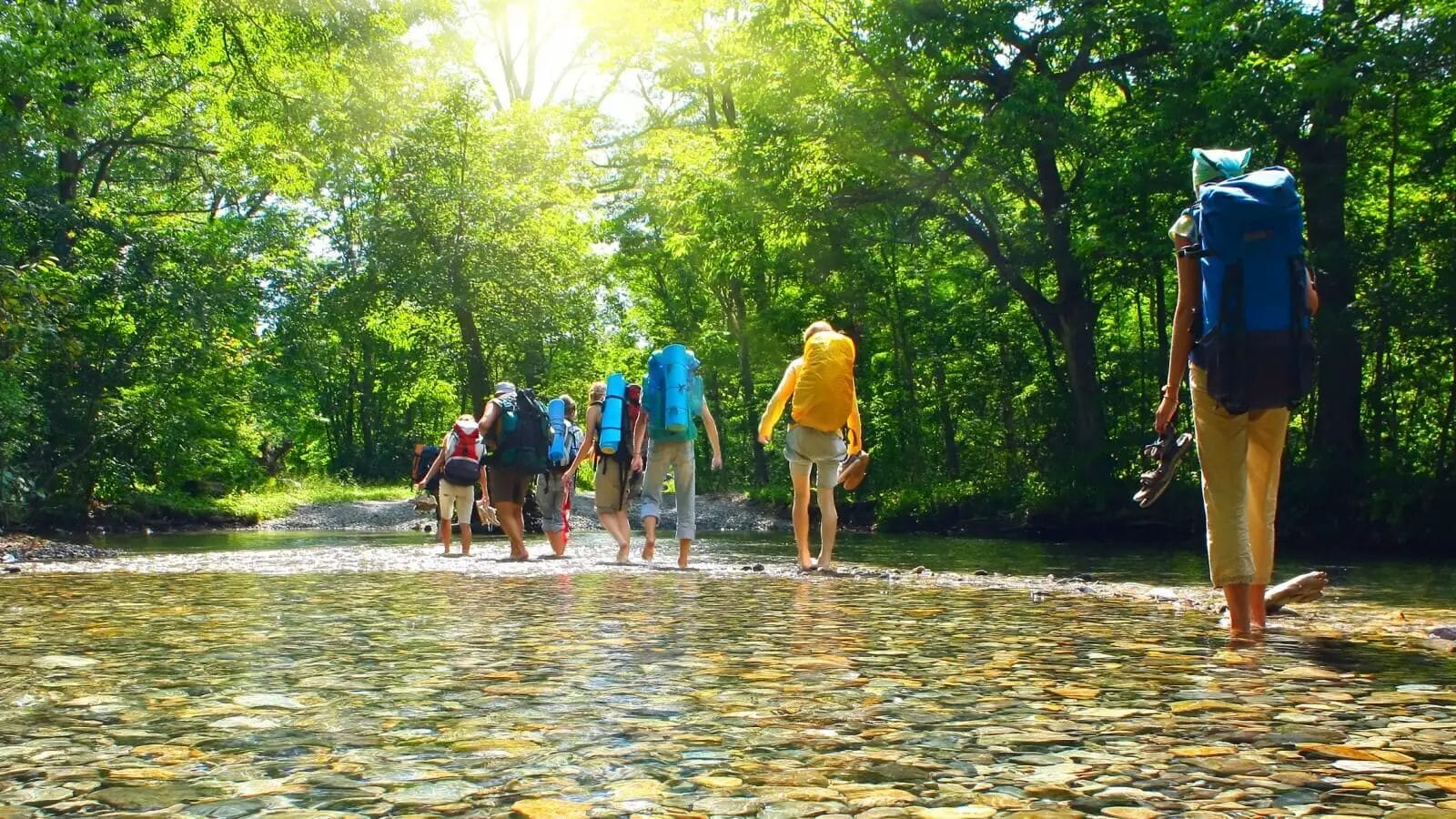
Water shoes differ from standard shoes in a number of ways. Between their fit, features, weight, breathability and more, questions arise when trying to choose the best option. Luckily, ShoeGuide has your answers!
What are water shoes and how do they differ from normal shoes?
Water shoes are a type of tough, yet light weight, footwear. They are built for activities where the likelihood your feet will be wet or submerged in water. Typically made from mesh or neoprene uppers and rubber outsoles. The outsoles provide strong grip in wet conditions, protect the feet from the elements, and do not absorb water, allowing them to dry almost immediately.
Shoes for water sports are specifically designed for a variety of water-based activities, only a few of which we covered in our list above, and in our testing procedures. The light materials allow water to flow out when drying. Harder soles provide cushion, protecting the feet from rocky, wet and sharp hazards.
Why should you get water shoes?
Feet are vital for support and stability, of course. It’s crucial to ensure they remain comfortable and protected in any situation or terrain you encounter. With water as an added element of surprise, standard sports sneakers or flip flops tend to falter if you’re being active in the water.
If you’re trying to use regular shoes in the water, the best case is you end up with water logged shoes and blisters. The worst case is you seriously injure yourself from a fall or from a sharp object piercing a soft or foam sole.
Water shoes have superior traction and grip. They provide protection from the elements and from hazards under foot. Also, they are typically lighter than standard shoes, quick to dry and even quicker to drain.
What are some of the best activities to do with water shoes?
Water shoes exist for almost any activity you can think of. That’s why it’s important to do a bit of research with guides (such as ours) before making a decision. You don’t want to end up with a shoe that doesn’t work with your activities.
Water shoes can provide you with the necessary comfort and stability to get the most fun out of a wide range of water-focused endeavors. This ranges from boating to paddle sports, surfing to diving, swimming to fishing to hiking, and even trips to the waterpark.
Additionally, water shoes are ideal when exploring beaches, and provide additional grip and traction around slippery surfaces surrounding swimming pools.
Are many water shoes slip-resistant?
Solid grip and surface traction are two of the most important features that you should consider in high quality water shoes. Wet environments are predictably unpredictable, so you need shoes that will give you traction for whatever you encounter. The outsole of a quality water shoe helps you to maintain contact with the ground. For this reason, for slip resistance it’s crucial to test for the “stickiness” of the outsole.
Stronger rubber soles with additional grips, also known in some shoes as “lugs” provide ample traction on slippery, unpredictable surfaces, creek beds, waterlogged wood, boat decking, and even by the pool.
Wrapping Things Up
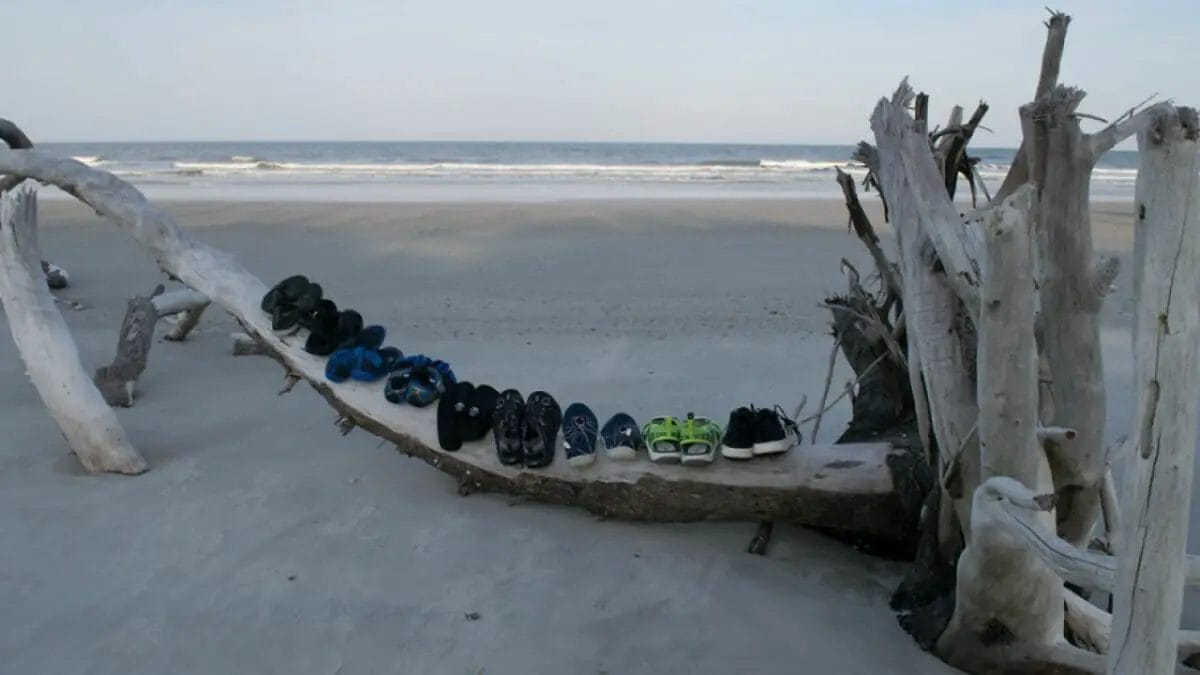
Regardless of your needs, there is a water shoe to ensure that your experience is of the highest caliber. The days clunky, hideous messes are long behind us all. Lately, more fashionable and functional water shoes have become the standard, like the ones we have tested for you.
We are confident that you are now armed with the knowledge and pseudo-experience to make the right decision on your next pair of water shoes. We hope you’ve enjoyed what is surely the most extensive, comprehensive guide to water shoes in existence. Have questions? Feel free to drop us a comment! And thank you for stopping by Shoe Guide!


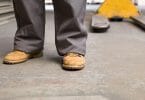
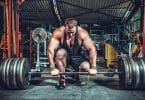

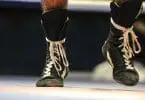
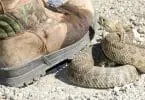

These shoes are so comfy, but way way too big. I tried three different pairs from Amazon, and all too big. Finally had to buy in a local store at 2 sizes smaller than my normal shoe size so I could get them in time. I recommend using Amazon wardrobe to try on multiple sizes if you have time to wait. I have a wide foot, and these shoes fully accomodate my feet with no rub or tension. The sole is cushioned, but not too squishy. The fabric is breathable mesh, and ideal for barefeet.
Hi Annie! Thanks for commenting! But you forgot to let us know which water shoe it was that you got. Were the swim shoes or beach shoes or were the water shoes for hiking or something else? It’d be awesome if we knew, particularly since the sizing seems to be so far.
Also, I’m not sure what Amazon wardrobe is? It sounds like something where you can order the items, try them on, and then send them back if they don’t fit? That sounds great! Not sure how they can make money with that model though… those shipping costs would really add up, I would think.
Astral water shoes are the only way to go!
Hey cool, we’ll take a look at them. The consensus at ShoeGuide is that the last time we looked them up, their shoes were super expensive.
Can’t find the right shoes for my next match